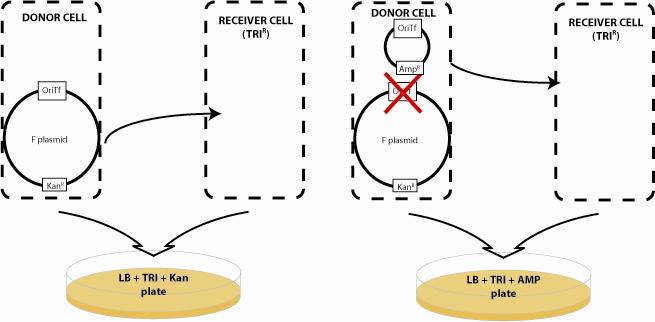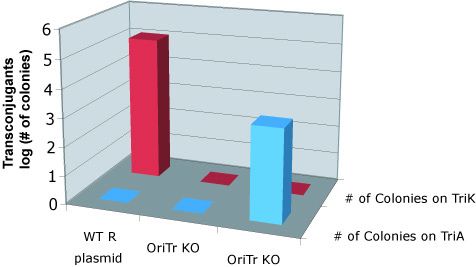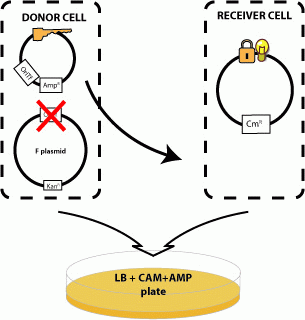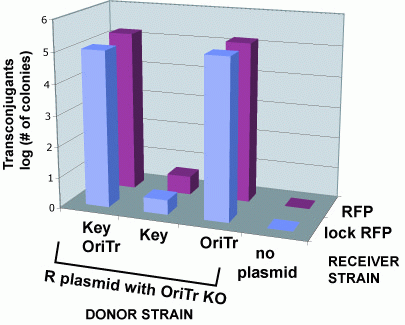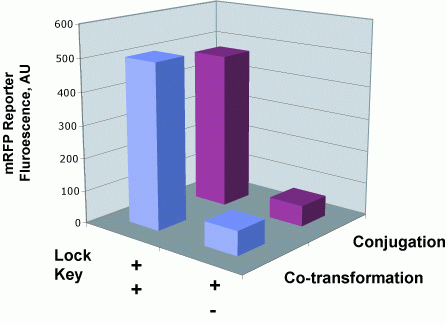Berkeley2006-ConjugationMain
From 2006.igem.org
JCAnderson (Talk | contribs) |
JCAnderson (Talk | contribs) |
||
| Line 2: | Line 2: | ||
[[Image:Berkeley2006_Conjugation1.jpg]] | [[Image:Berkeley2006_Conjugation1.jpg]] | ||
| - | + | === === | |
| + | To quantify the efficiency of transfer, we exploit antibiotic markers present in either the genome or | ||
Revision as of 02:50, 29 October 2006
Bacterial conjugation provides the communication system for our networks. Based on the natural F and RP4 plasmids, DNA "messages" can be sent from a donor cell to a recipient cell based on conjugation when the two cell types are mixed in liquid media or on a surface. Natural conjugative plasmids are large 60-100kb, circular plasmids that encode all the genes necessary for plasmid transfer including pili for bacteria-bacteria interactions, and genes that prevent superinfection of F and RP4-containing cells with secondary messages. Although F-type cells cannot send send plasmids to one another, F plasmid cells can send plasmids to R-type cells and vice versa. A critical component of transfer is the origin of transfer (oriT). This sequence within the conjugative plasmid initiates rolling circle amplification and transfer of the plasmid to the recipient cell. In our system, we have deleted the oriT region of the RP4 and F plasmid by the methods of [http://www.ncbi.nlm.nih.gov/entrez/query.fcgi?db=pubmed&cmd=Retrieve&dopt=AbstractPlus&list_uids=10829079&query_hl=3&itool=pubmed_docsum Wanner] such that these plasmids can no longer be transferred.
To quantify the efficiency of transfer, we exploit antibiotic markers present in either the genome or
F plasmid Conjugation Can be Controlled Via OriTf Activity
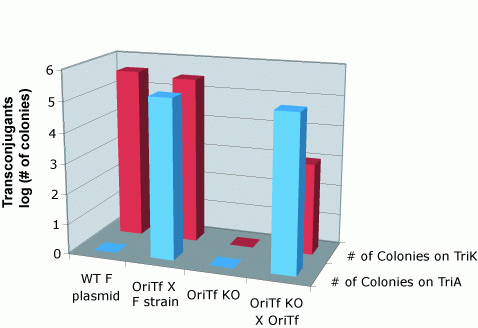
R plasmid Conjugation Can be Controlled Via OriTr Activity
Cell Sends "Key" to Recipient Cell which Unlocks Message
Riboregulator's Don't Effect Conjugation Efficiency
Conjugation Does Not Impede Riboregulator Function
Next Section: Tuning Expression Levels with Synthetic Promoters
